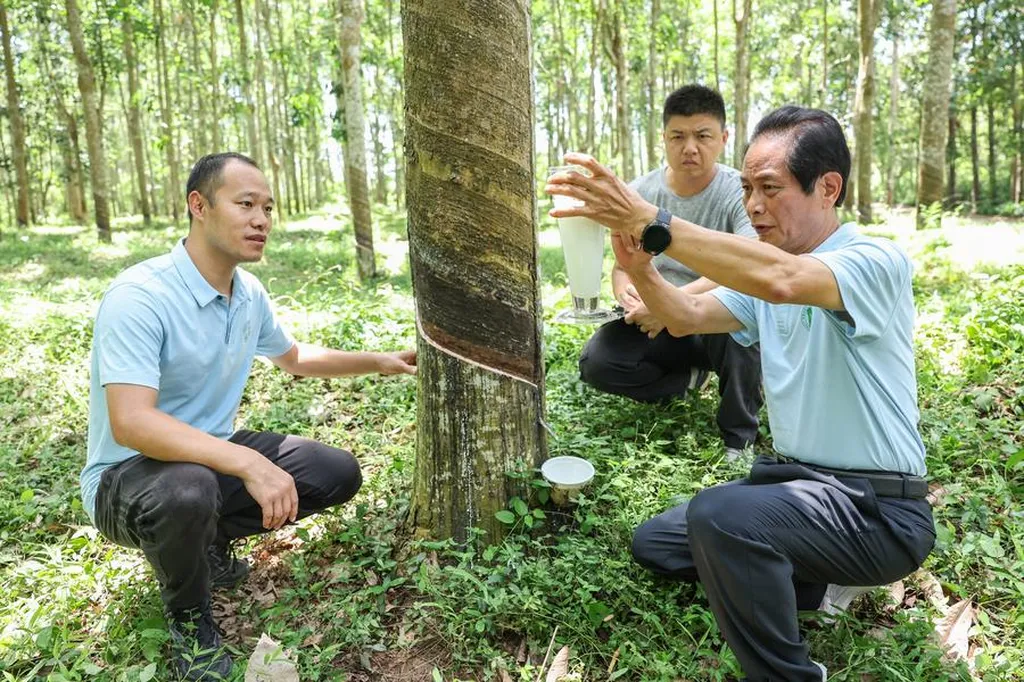In the heart of China’s Hainan University, a team of researchers led by Yuheng Li has developed a groundbreaking solution that could revolutionize the way we monitor and manage powdery mildew in rubber tree plantations. This innovative approach, detailed in a recent study published in the journal *Smart Agricultural Technology* (translated as *智能农业技术*), combines advanced deep learning techniques with practical agricultural needs, offering a promising tool for farmers and agribusinesses alike.
Powdery mildew, a common fungal disease, poses a significant threat to rubber tree crops, leading to reduced yield and quality. Traditional methods of detecting and grading this disease are often time-consuming and labor-intensive. Enter light-PMSeg, a lightweight instance segmentation framework designed for real-time, on-device disease grading. This technology promises to streamline the monitoring process, enabling farmers to take timely action and mitigate potential losses.
The research addresses a critical challenge in the field: balancing accuracy with computational efficiency. “Existing deep learning models often struggle to identify small, multi-scale disease spots in complex backgrounds,” explains Li, a researcher at the School of Cyberspace Security and the Key Laboratory of Internet Information Retrieval of Hainan Province. “Our solution bridges this gap by integrating a Mixed Aggregation Network (MANet) and a Channel-wise Cross Fusion Transformer (CCFT) to enhance sensitivity to small targets and multi-scale feature extraction.”
The team’s approach involves two key techniques: model pruning and knowledge distillation. Model pruning reduces the model’s complexity, making it more suitable for deployment on low-storage devices. Knowledge distillation, on the other hand, transfers knowledge from a large model to a smaller one, ensuring that the reduced model retains its accuracy. This combination results in a model that is both lightweight and highly accurate.
The practical implications of this research are substantial. By enabling real-time, on-device segmentation, light-PMSeg can help farmers monitor their crops more effectively, reducing the need for manual inspections and allowing for more timely interventions. This can lead to increased crop yields, improved product quality, and ultimately, higher profits for farmers and agribusinesses.
Moreover, the technology’s efficiency makes it suitable for deployment in resource-constrained environments, such as remote plantations. “Our model achieves a mAP50 (Mask) of 90.1% and an F1-score of 85.4% at a speed of 148.6 FPS, while reducing the model’s parameters by 79.6% compared to the unpruned PMSeg,” Li notes. This level of performance is a game-changer for the agricultural sector, offering a scalable and cost-effective solution for disease monitoring.
The research also introduces an automatic grading algorithm based on the segmentation masks, providing actionable disease severity levels. This feature further enhances the practicality of the technology, making it a valuable tool for farmers and agricultural professionals.
As the world grapples with the challenges of climate change and food security, innovations like light-PMSeg offer a beacon of hope. By leveraging the power of artificial intelligence and deep learning, we can develop more sustainable and efficient agricultural practices, ensuring a secure food supply for future generations.
This study, published in *Smart Agricultural Technology*, represents a significant step forward in the field of agricultural technology. It not only addresses a critical need in the industry but also demonstrates the potential of AI to transform traditional practices. As we look to the future, the integration of such technologies will be key to building a more resilient and sustainable agricultural sector.

